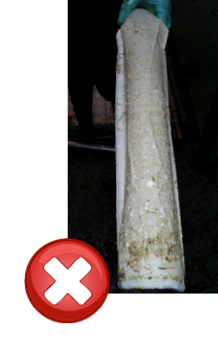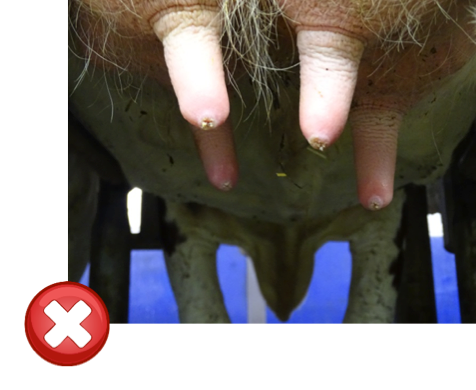
For a while now, fore-stripping is strongly recommended by mastitis specialists. The protocol is to eject the 2-3 first jets of milk from each quarter in a specific plate so that they can be observed.
It is a crucial step in mastitis management, however many farmers skip it in order to “save time”. Below the 3 advantages of forestripping and why you MUST do it!

-
It helps to remove the contaminated residual milk from the teat canal. This residual milk is a perfect food for bacteria to grow in between 2 milkings! It also has an impact on the final milk TBC (milk quality indicator)
TIP : in order to convince your farmer to go for pre-stripping, ask to see the milk filter. All the visible dirt in the filter would be removed thanks to a good teat preparation.

-
The second purpose of fore-stripping is to detect first signs of clinical mastitis thanks to a black bottom cup. The clinical mastitis is detected via milk modifications (clots, flakes or blood). An early detection allows an early treatment and increases the chances to cure.
-
 Finally, the fore-stripping at the beginning of teat preparation is the best stimulation to activate oxytocin reflex and to obtain a good milk flow during milking. Adequate milk release is necessary to decrease the milking time per cow and avoid teat skin and sphincter damages associated with overmilking.
Finally, the fore-stripping at the beginning of teat preparation is the best stimulation to activate oxytocin reflex and to obtain a good milk flow during milking. Adequate milk release is necessary to decrease the milking time per cow and avoid teat skin and sphincter damages associated with overmilking.
Teat lesions due to milking machine: the teat ends show hyperkeratosis and compression ring at the teat base are visible.
Pictures: Courtesy of DVM Robin Franzon, dairy technical support, CID LINES